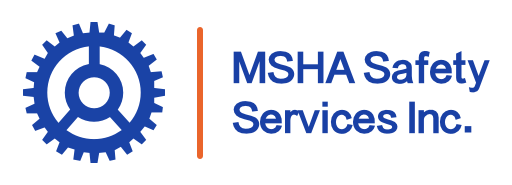In the mining industry, the health and safety of workers is paramount. Industrial hygiene plays a critical role in safeguarding employees by identifying, evaluating, and controlling workplace hazards. This article will delve into the core concepts of industrial hygiene, its importance, key principles, and best practices in mining, providing a comprehensive understanding of how these practices can create safer work environments.
What is Industrial Hygiene?
Industrial hygiene is the science and art devoted to the anticipation, recognition, evaluation, and control of environmental factors that may affect the health and well-being of workers. This discipline focuses on identifying potential hazards in the workplace and implementing measures to mitigate them.
The Basics of Industrial Hygiene
The fundamental concepts of industrial hygiene involve understanding the types of hazards that can affect workers, such as chemical, physical, biological, and ergonomic hazards. By addressing these hazards, employers can foster a safer workplace, reduce risks, and promote employee health.
The Importance of Industrial Hygiene
The significance of industrial hygiene cannot be overstated. The benefits of effective hygiene practices include:
- Improved Worker Health: By minimizing exposure to harmful substances, workers can maintain better health, reducing the risk of occupational illnesses.
- Lower Absenteeism: A healthier workforce results in fewer sick days, leading to increased productivity.
- Enhanced Productivity: Workers who feel safe and protected are more motivated and engaged, contributing positively to overall productivity.
- Better Employee Morale: Prioritizing safety and well-being fosters a positive work environment, boosting morale and job satisfaction.
Key Principles and Components of Industrial Hygiene
There are 4 Principles of Industrial Hygiene. They are:
- Anticipation: Identifying potential hazards before they occur.
- Recognition: Acknowledging existing hazards through workplace inspections and employee feedback.
- Evaluation: Assessing the severity of identified hazards and their potential impact on worker health.
- Control: Implementing strategies to mitigate or eliminate risks.
Common Examples and Practices in Industrial Hygiene
Effective industrial hygiene practices include:
- Dust Control Measures: Implementing ventilation systems and water suppression techniques to minimize airborne particulates.
- Noise Control: Using noise barriers, soundproofing, and providing hearing protection to reduce noise exposure.
- Ergonomic Risk Assessments: Evaluating workstations and practices to minimize strain and prevent musculoskeletal injuries.
- Hazardous Materials Handling: Ensuring proper storage, labeling, and training on the safe handling of hazardous substances.
Compliance and Standards
Complying with MSHA Standards
The Mine Safety and Health Administration (MSHA) sets regulations that guide industrial hygiene practices in mining. Compliance with these standards is crucial to ensure worker safety and health.
Updated Silica Exposure Standards
Recent updates to silica exposure standards emphasize the importance of staying compliant with new regulations to protect workers from respiratory hazards associated with respirable crystalline silica dust.

Risk Management and Safety Protocols
Safety Risk Management:
Effective risk management involves identifying potential hazards in the workplace and implementing preventive measures to mitigate them. This proactive approach is essential in maintaining a safe mining environment.
Hazard Identification and Employee Training:
Educating workers on potential risks is vital for enhancing workplace safety. Training programs should cover hazard identification, safe work practices, and the proper use of PPE.
The Role of Industrial Hygienists
Industrial hygienists play a crucial role in maintaining workplace safety. Their responsibilities include monitoring and assessing workplace environments, conducting risk assessments, and recommending control measures to mitigate hazards.
Implementing Effective Industrial Hygiene Practices
To implement effective industrial hygiene practices, follow these steps:
- Conduct a Hazard Assessment: Identify and evaluate potential hazards in the workplace.
- Implement Control Measures: Develop and apply strategies to eliminate or reduce risks.
- Monitor and Evaluate: Regularly assess the effectiveness of implemented measures and make necessary adjustments.
The Value of Industrial Hygiene: Hazard Identification
The value of industrial hygiene lies in its contribution to overall workplace safety and employee well-being. By proactively managing hazards, employers can create a safer work environment, reduce the risk of accidents, and enhance the health of their workforce.
Why is Industrial Hygiene Important?
Prioritizing industrial hygiene is essential in the mining industry to ensure the safety and health of workers. By implementing effective practices and adhering to regulations, mine operators can foster a safer work environment, leading to improved health, productivity, and employee morale. It’s crucial for mining companies to continuously evaluate and enhance their industrial hygiene practices to protect their most valuable asset—their employees.

